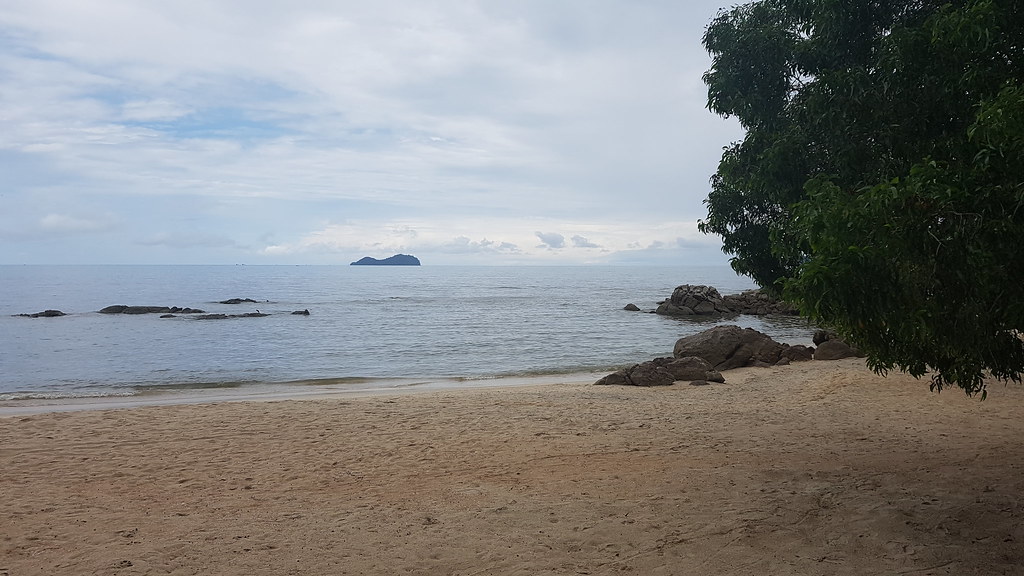How researchers in Penang are growing oysters naturally
Simon Tan stumbles upon fascinating research into the sustainable farming of oysters using natural algae and plankton as feed.
I had the rare opportunity to visit the Centre for Marine and Coastal Studies (Cemacs) at Universiti Sains Malaysia recently.
The centre is located at Teluk Aling in the northwest coast of Penang Island in the Penang National Park.
According to the Cemacs website, “research and training conducted at the centre is focused on biodiversity and conservation of marine ecosystems, coastal forest ecosystems, mariculture and marine mammal ecology (dugong and dolphin).” Associates of the centre are provided with direct access to the centre’s considerable research and training facilities.
Upon our arrival at Teluk Aling, we were ushered into a plush boardroom, which was a real surprise. (Prof Aileen Tan later explained that the boardroom was renovated for an international conference attended by one of our prime ministers.)
We were introduced to two other professors and then taken to labs and a static display, where we could see some ongoing research.
A lot of information was shared during our walk through the labs and what I have written below are topics that resonate with me based on my own observations, understanding and the importance attached to them.

The three key words that I kept hearing were sustainability, sharing (of knowledge) and service (to community). The new word I learnt was molluscs, which leads in to my interest in sustainable mariculture (eg molluscs and echinoderms) vs aquaculture (which we commonly see around Malaysia eg shrimp and fish farming).
Cemacs is good at research and development of the production of oyster seeds (baby oysters) as in the picture at the top.
These seeds are sold to participating fishermen who wish to venture into sustainable green farming. The oyster farmers trained by Cemacs, with minimal investment in floats and baskets and with periodic work to clean the baskets, can earn up to RM5,000-RM8,000 a month.
Mariculture of oysters does not harm the environment; it is sustainable as the oysters feed on natural algae and plankton, unlike fish or prawn aquaculture which requires a lots of energy and synthetic food, plus antibiotics.
The rakyat benefit as they are able to buy fresh oysters, grown with a low carbon footprint, at a lower price compared to imported oysters flown in. Well done, Cemacs, for promoting another sustainable cottage industry as a service to both oyster farmers and consumers alike.
“If Penang wants to champion a green state, this is the direction it should move towards,” said Prof Tan. “Cemacs is ready to help cultivators set up their own hatcheries to get them started in oyster farming … Cemacs produces oyster seeds that fishermen and aquaculture operators can purchase.”
I also saw some research on sea urchins, which have good markets in China, Japan and Hong Kong.

Cemacs focuses its research on invertebrates ie molluscs, echinoderms and crustaceans in the aspects of biodiversity, conservation and food security.
More recently, Cemacs has started research to increase the limited supply of (blood) cockles through mariculture.
Tan is trying to find other ways to culture cockles rather than in their natural site, which is now considered as polluted. Cemacs is exploring the possibility of introducing cleaner or bigger-sized sediment for the cockles to attach to. It is also looking into using the unused prawn ponds along the coastline to grow cockles, with their favourite type of sediment placed there.
I was amazed by the large collection of (dead) coral samples in the Museum of Natural (Marine) History in Cemacs. Unfortunately many of these corals species are struggling to survive in the ever-increasing sea water pollution off the west coast of Peninsula Malaysia.
It was good to know that live coral samples from Pulau Kendi off the southwest coast of Penang Island are in the labs for research. I’d thought no more corals could be found around Penang Island.
Pulau Kendi in the distance
So now, I hope that my ‘moon-shot’ wish for Pulau Kendi to be designated as the second marine park in the Straits of Malacca (after Pulau Payar) will see some light – despite a strong desire by the state government to carry out land reclamation spanning 4,500 acres to create three huge artificial islands near Pulau Kendi.
I would like to thank Prof Tan, senior lecturer Abe Woo and research officer Nithiyaa Nilaman of Cemacs for their readiness to share their knowledge of marine conservation and sustainable mariculture. This is a valuable community service to help our fishermen – who are facing serious environmental challenges – and our consumers.

The win-win synergy of oyster farming epitomises Cemacs’ research strength. Please organise your interest groups to visit Cemacs and spend some time viewing and reading about the amazing collection of marine specimens in its museum. While there, talk to the knowledgeable researchers and then share your experience of the visit with others.
Keep abreast of Cemacs and its activities on Facebook and Instagram.
Simon Tan, an Aliran member, is a mechanical engineer by training. An avid mountain biker, he is interested in eco-friendly and sustainable transport and development.
Source: Aliran
- Hits: 2103